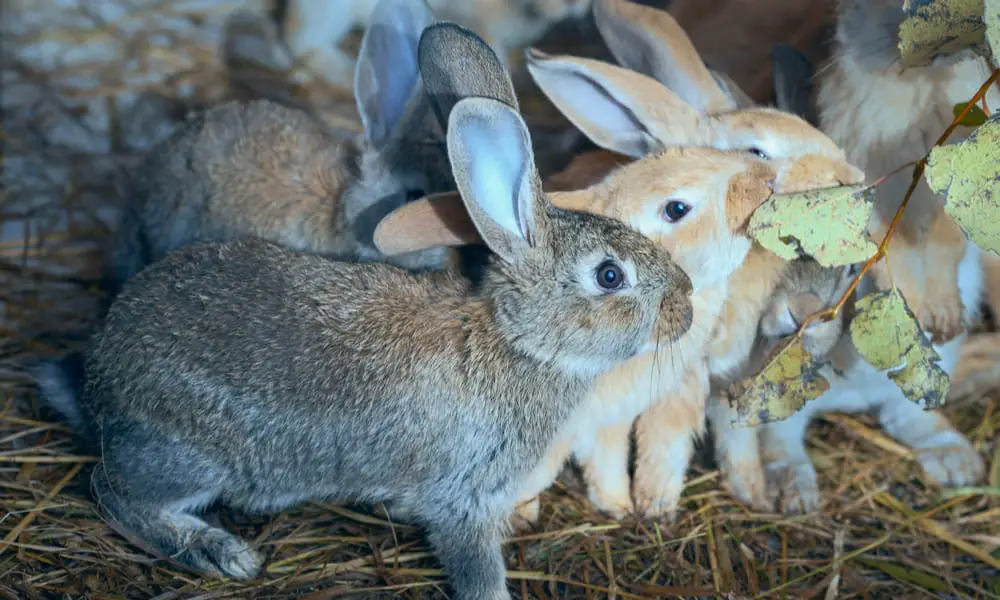Since rabbits typically have large litters and grow quickly, they are highly profitable animals you can sell for meat and fur or as breeding stock and pets. In the past, many labs used these lovely creatures for laboratory research and scientific purposes. Luckily, it is a rarer practice nowadays.
On average, you can count on $30 to $40 profit per rabbit, but be careful. It is crucial to make a precise calculation, involve all the costs, and keep rabbits clean, well-fed, and healthy. Otherwise, you can be disappointed with the result. Let’s discover the most profitable rabbit breeds you should consider before starting a new business.
Table of Contents
Most Profitable Rabbit Breeds
People breed these lovely creatures for a few reasons. Besides being beloved pets and show animals, some rabbits are a source of meat and fur or end up in labs as experimental subjects.
Most common & popular rabbit breeds |
||
| Breed | Purpose | Weigh |
| New Zealand rabbit | For meat | 9 to 12 pounds (4 – 5.5 kg) |
| Californian white rabbit | For meat | 8 to 10.5 pounds (3.6 – 4.8 kg) |
| Champagne d’Argent rabbit | For meat | 10 to 12 pounds (4.5 – 5.5 kg) |
| Cinnamon rabbit | For meat | 8.5 to 11 pounds (3.9 – 5 kg) |
| Palomino rabbit | For meat | 8 to 11 pounds (3.6 – 5 kg) |
| Florida White rabbit | For meat | 4 to 6 pounds (1.8 – 2.7 kg) |
| Harlequin rabbit | For meat | 6.5 to 9.5 pounds (2.9 – 4.3 kg) |
| American Chinchilla rabbit | For meat and fur | 9 to 11 pounds (4 – 5 kg) |
| Flemish Giant rabbit | For meat and fur | 9 to 20 pounds (4 – 9 kg) |
| Satin rabbit | For meat and fur | 10 to 11 pounds (4.5 – 5 kg) |
| Silver Fox rabbit | For meat and fur | 11 to 12 pounds (5 – 5.5 kg) |
| Altex rabbit | For meat and fur | 10 to 20 pounds (4.5 – 9 kg) |
| English Spot rabbit | For meat and lab | 5 to 8 pounds (2.3 – 3.6 kg) |
| Standard Rex rabbit | For fur | 7 to 10 pounds (3.2 – 4.5 kg) |
| American Fuzzy Lop rabbit | For wool | 3 to 4 pounds (1.4 – 1.8 kg) |
| French Angora rabbit | For wool | 7.5 to 10 pounds (3.4 – 4.5 kg) |
| English Angora rabbit | For wool | 5 to 7.5 pounds (2.3 – 3.4 kg) |
| Satin Angora rabbit | For wool | 3.5 to 9.5 pounds (1.6 – 4.3 kg) |
| German Angora rabbit | For wool | 5 to 12 pounds (2.3 – 5.5 kg) |
| Giant Angora rabbit | For wool | 9.5 to 10 pounds (4.3 – 4.5 kg) |
| Jersey Wooly rabbit | For wool | 1 to 3 pounds (0.4 – 1.4 kg) |
| Dutch rabbit | For lab | 3.5 to 5.5 pounds (1.6 – 2.5 kg) |
| Himalayan rabbit | For lab | 2.5 to 5 pounds (1.1 – 2.3 kg) |
| Polish rabbit | For lab | 2.5 to 3.5 pounds (1.1 – 1.6 kg) |
For meat
Crucial rabbit breeds for meat production are New Zealand White and Californian rabbits, but people breed a few others for this purpose. The best are those with general characteristics that include:
- Large body size
- Naturally muscular body
- Fast growth rate
- High meat-to-bone ratio
- Easy for maintenance
1. New Zealand rabbit
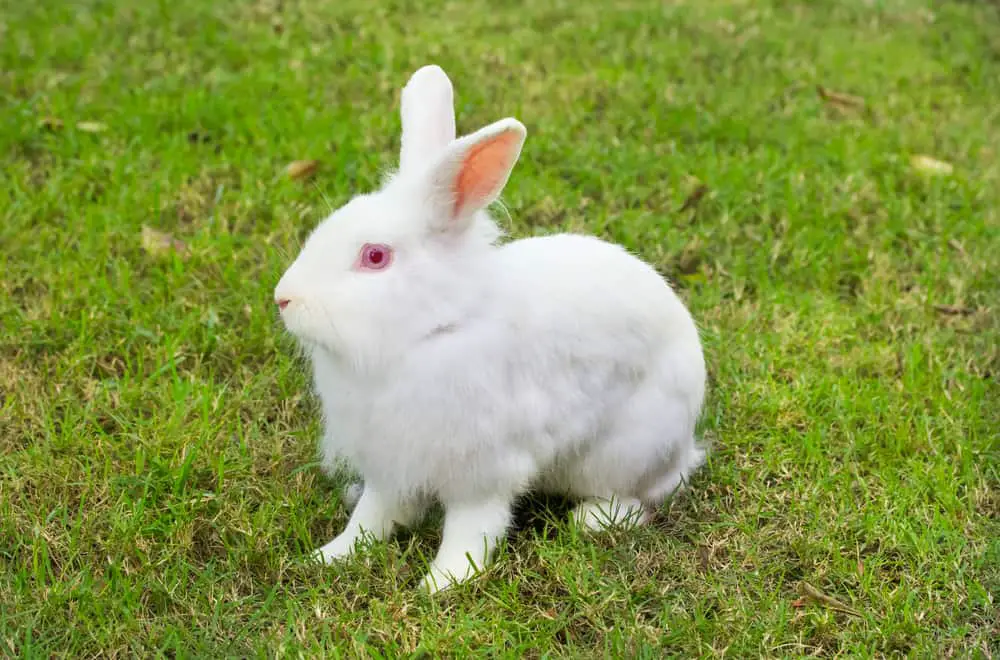
New Zealand rabbits have been considered the best option for meat since the early 1900s. They make approximately 90% of all rabbits raised for this purpose worldwide, thanks to delicious meat. Plus, they put on weight quickly. Kits reach 8 pounds (3.6 kg) for eight weeks, while adults weigh about 9 to 12 pounds (4 – 5.5 kg).
2. Californian rabbit
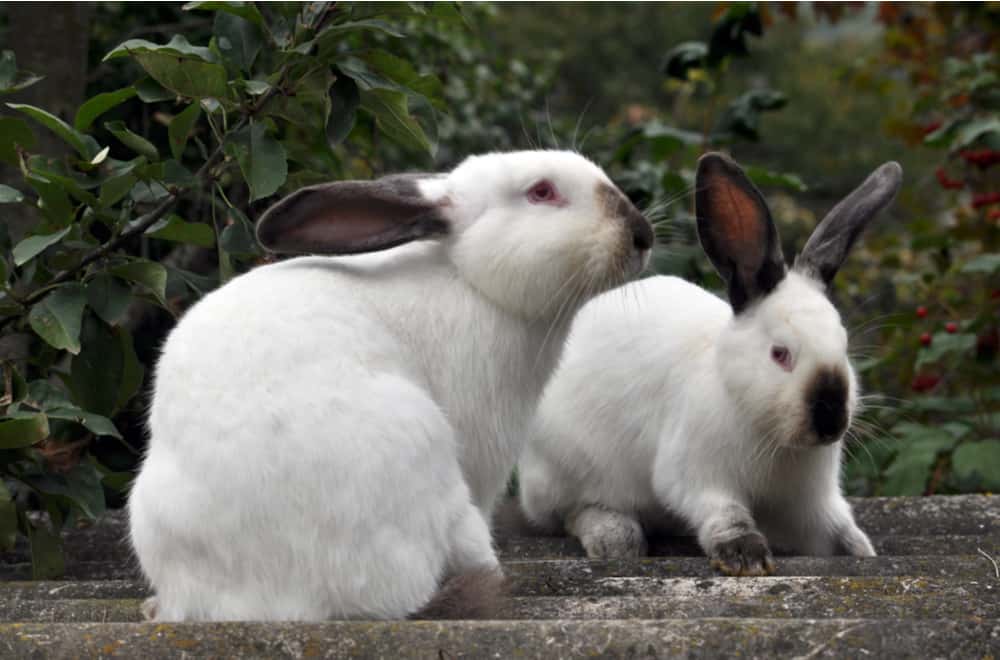
These highly productive American rabbits have been widely used for commercial purposes since 1923, when they were produced after long and thorough crossbreeding. Stocky adults quickly reach 8 to 10.5 pounds (3.6 – 4.8 kg) and are the second most sought-after meat-producing rabbit breed worldwide.
3. Champagne d’Argent rabbit
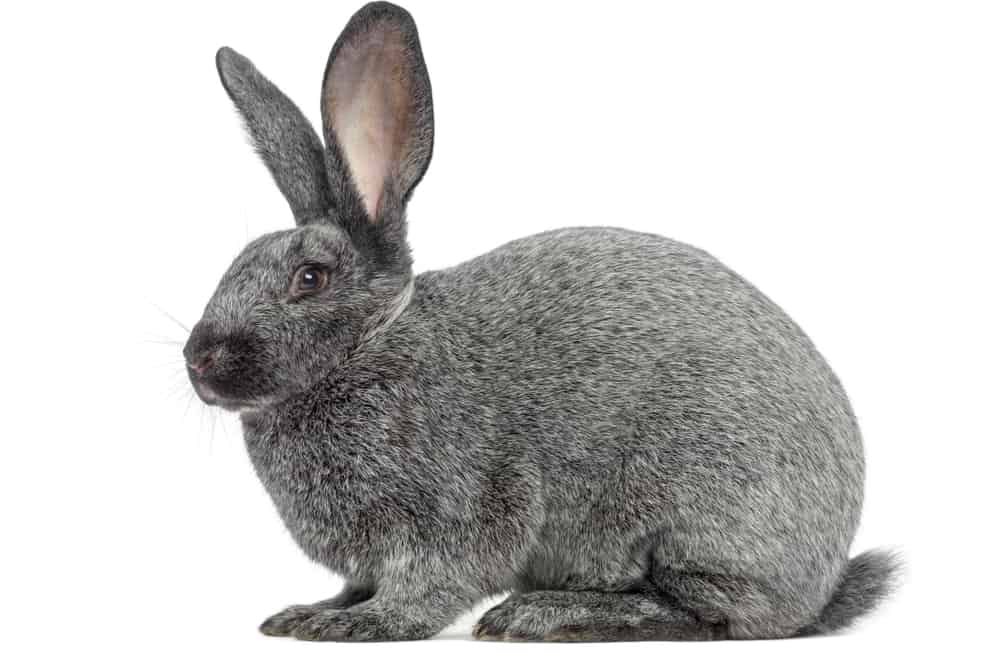
These rabbits are among the oldest commercial breeds worldwide and have been used for meat since 1631. Even though kits are black, Champagne d’Argent (French Silver Beauty) adults have skimmed-milk or silver fur.
Despite being almost perfect pets, this breed is primarily appreciated for delicious meat since they quickly reach 10 to 12 pounds (4.5 – 5.5 kg).
4. Cinnamon rabbit
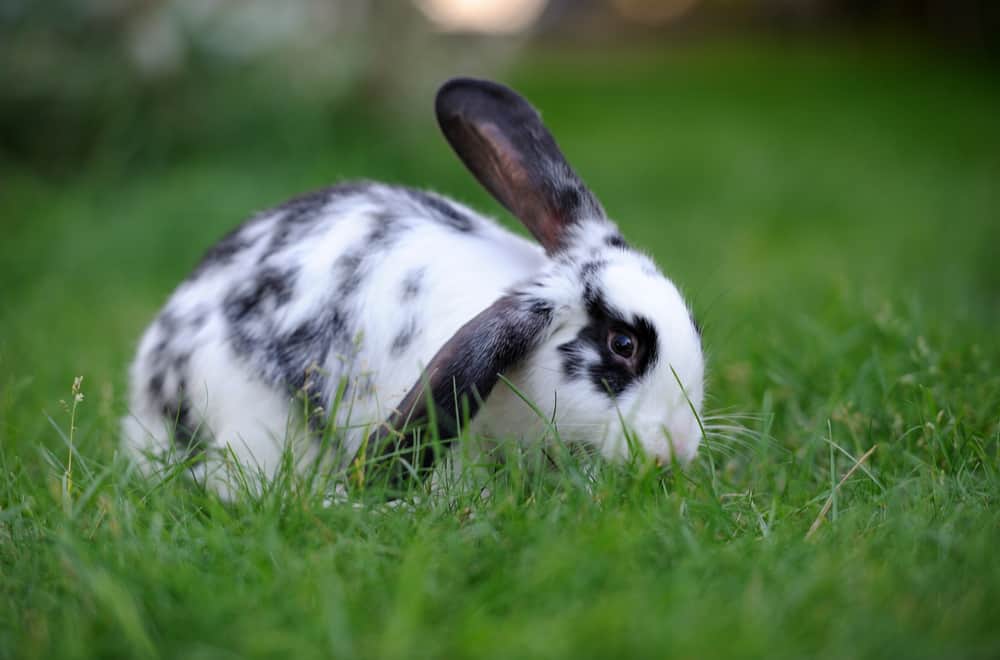
This rabbit meat breed typically weighs 8.5 to 11 pounds (3.9 – 5 kg). It was created accidentally in the early 1970s as a crossbreed of New Zealand Whites, Californians, and Checkered Giants. It is appreciated for yummy meat, but it is almost impossible to find these bunnies outside the US.
5. Palomino rabbit
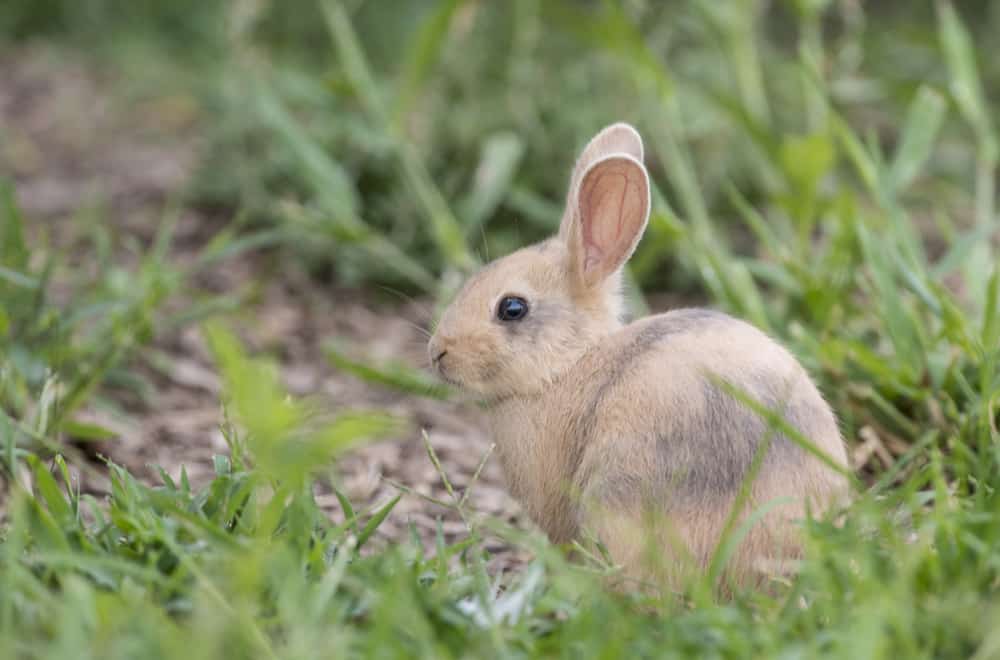
Most breeders commercially keep Palomino rabbits weighing 8 to 11 pounds (3.6 – 5 kg) for meat. They have an excellent and desirable meat-to-bone ratio but are less popular because growing slower than others bred for this purpose.
6. Florida White rabbit
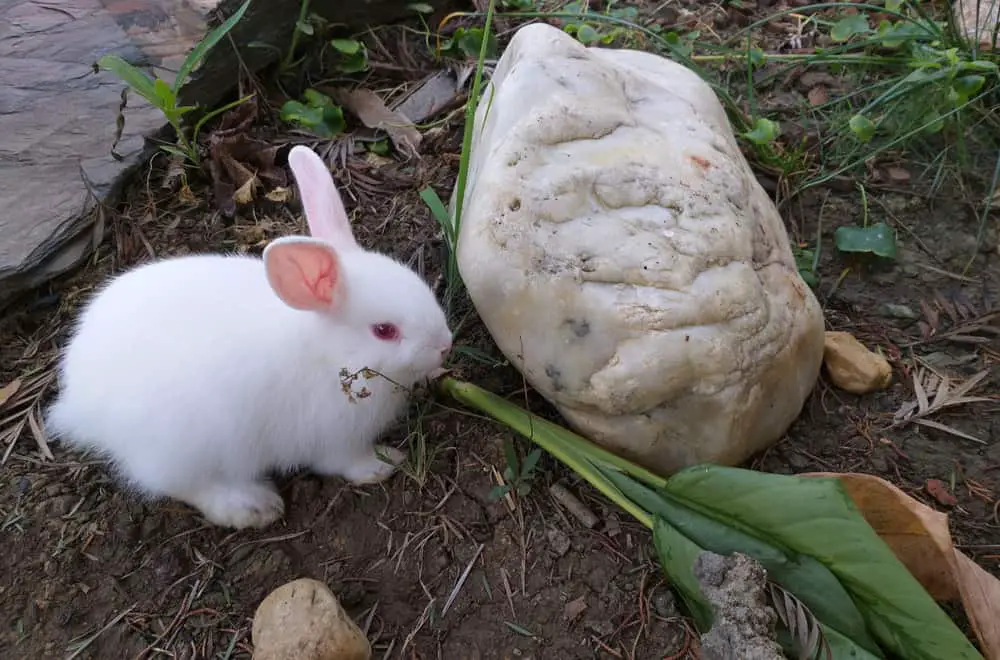
This for-all-purpose breed is an ideal option for small homesteads and sizable meat producers equally. They are smaller than other breeds intended for meat and weigh only 4 to 6 pounds (1.8 – 2.7 kg). However, their light bone structure makes up for this deficiency, making this breed an excellent option for novice rabbit raisers.
7. Harlequin rabbit
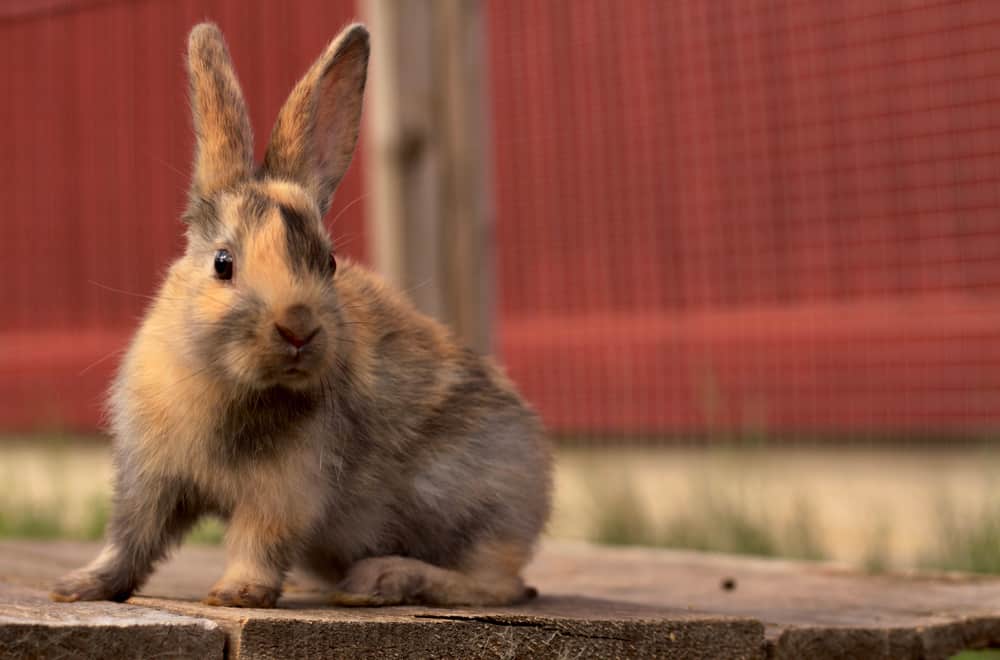
Most people keep 6.5 to 9.5 pounds (2.9 – 4.3 kg) heavy Harlequin rabbits as pets, but they are also the breed that is a source of delicious meat. These clown rabbits were a primary food for many American families during WWII. Nowadays, growing these bunnies for meat is profitable, thanks to their quick growth.
8. English Spot rabbit
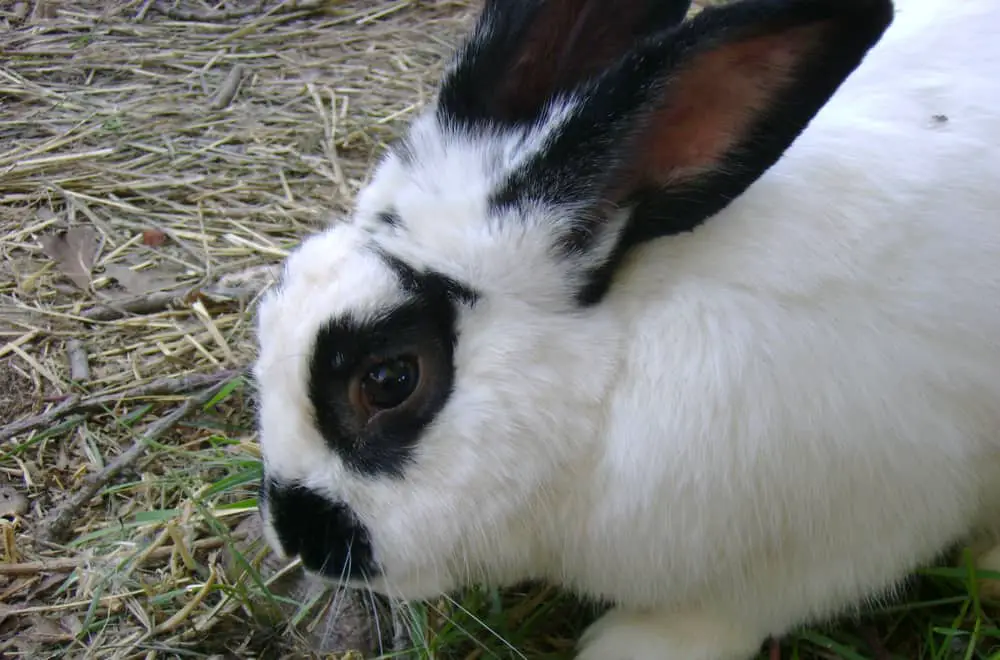
These medium-sized, 5 to 8 pounds (2.3 – 3.6 kg) heavy rabbits are among the oldest fancy rabbit breeds kept as pets. However, some less happy ones are only a source of meat or subjects in lab experiments.
For meat and fur
1. American Chinchilla rabbit
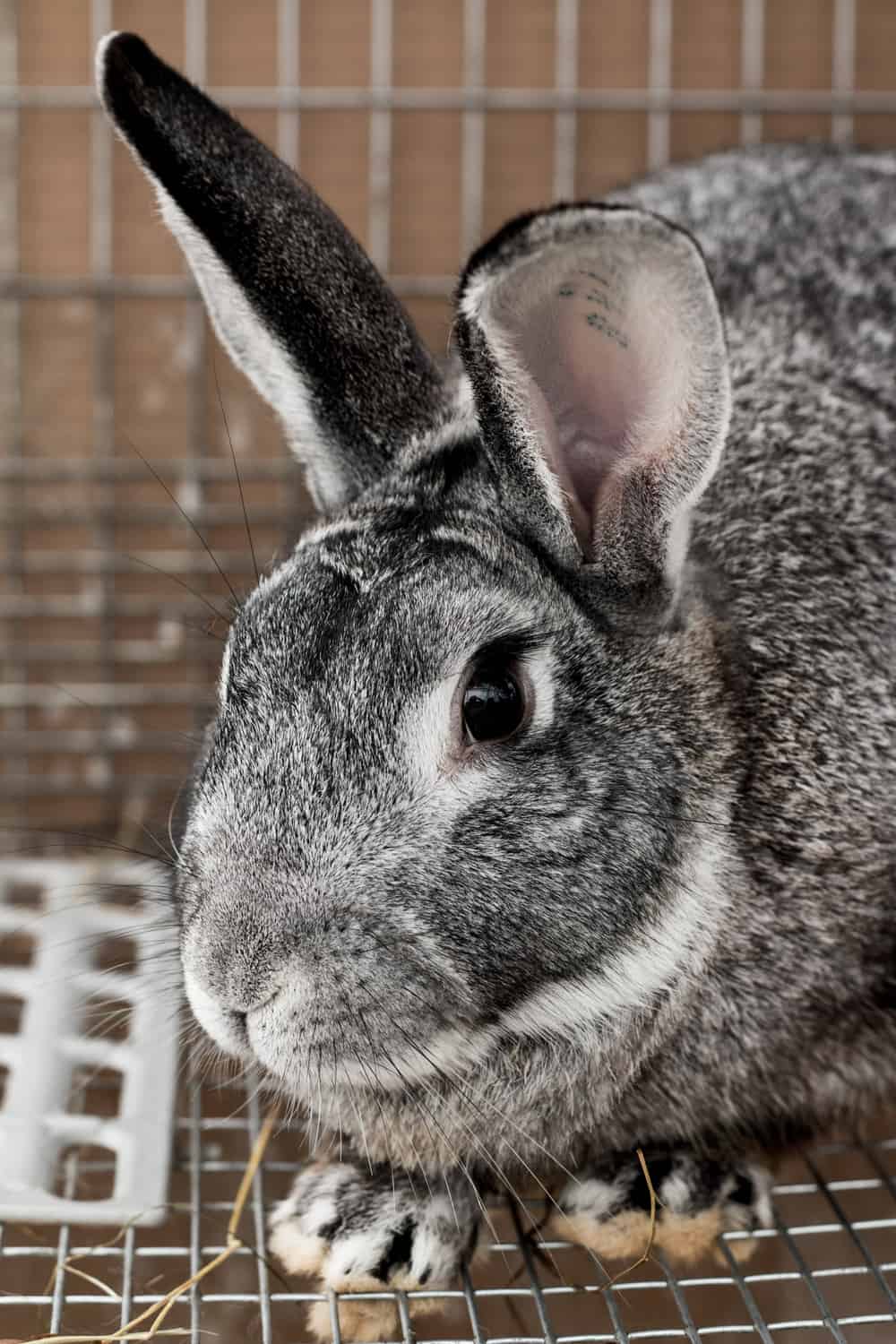
These 9 to 11 pounds (4 – 5 kg) heavy rabbits with stocky bodies are the best dual-purpose breed worldwide. Besides soft and elegant fur, this bunny offers delicious and uniquely tasting meat. You can use them for cooking and smoking, but finding them is challenging since they are considered an endangered breed.
2. Flemish Giant rabbit
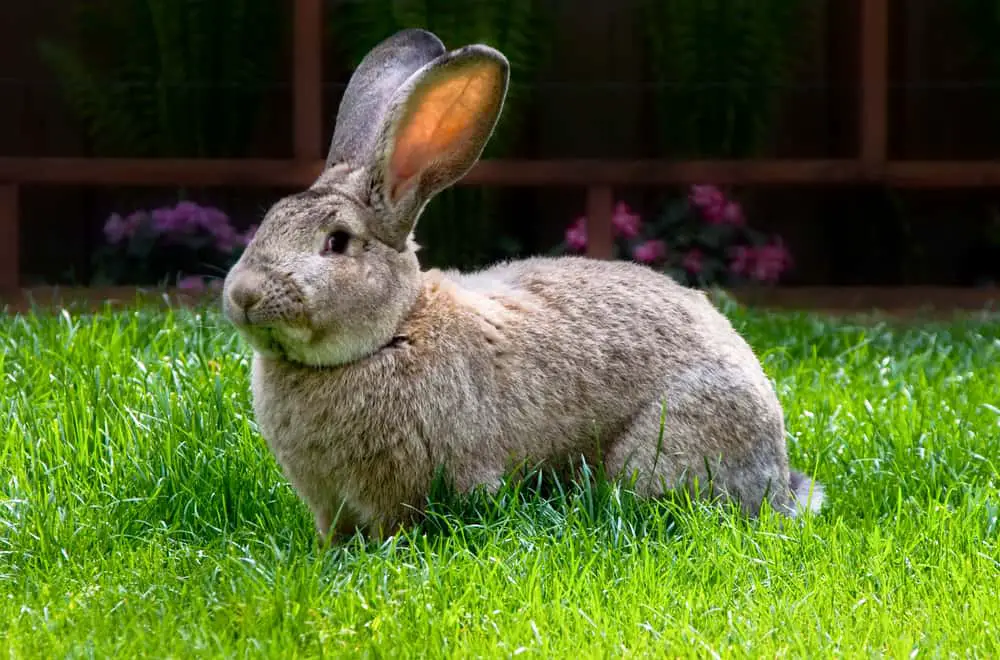
These giants weighing 9 to 20 pounds (4 – 9 kg) are prized for their meat and soft fur. Since this breed has existed for centuries, most experts believe that most current rabbit breeds have it as a base.
Despite their weight, they are not particularly appreciated because of their large bones and high food consumption, making them uneconomical.
3. Satin rabbit
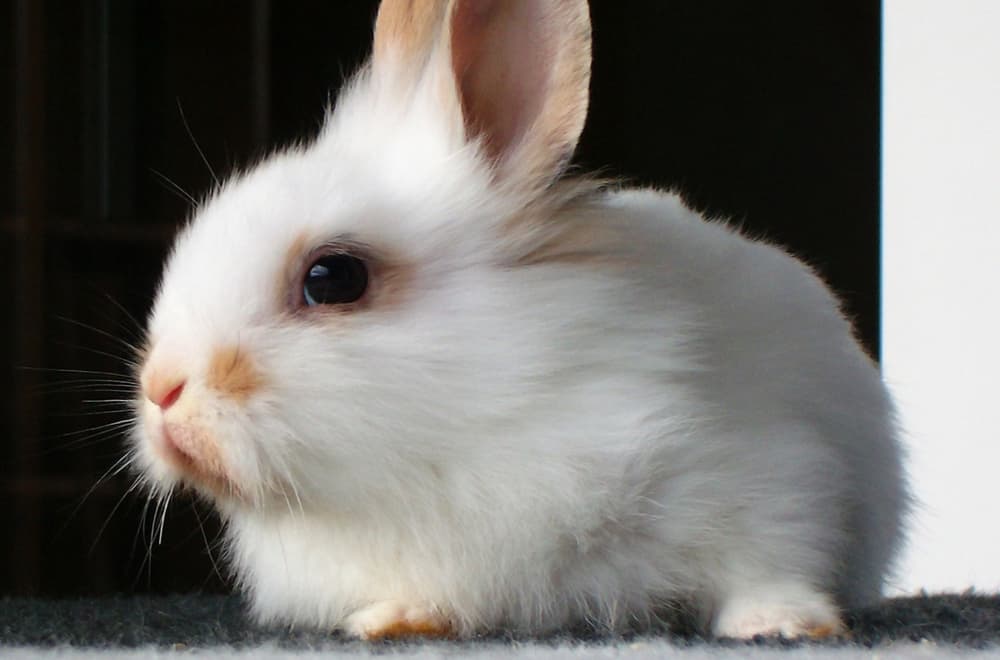
Approximately 10 to 11 pounds (4.5 – 5 kg) heavy Satin rabbits are a popular American breed for meat and fur. Since they are highly productive, they are convenient for commercial farming. On the other hand, their beauty makes this breed one of the most appreciated animals in rabbit shows.
4. Silver Fox rabbit
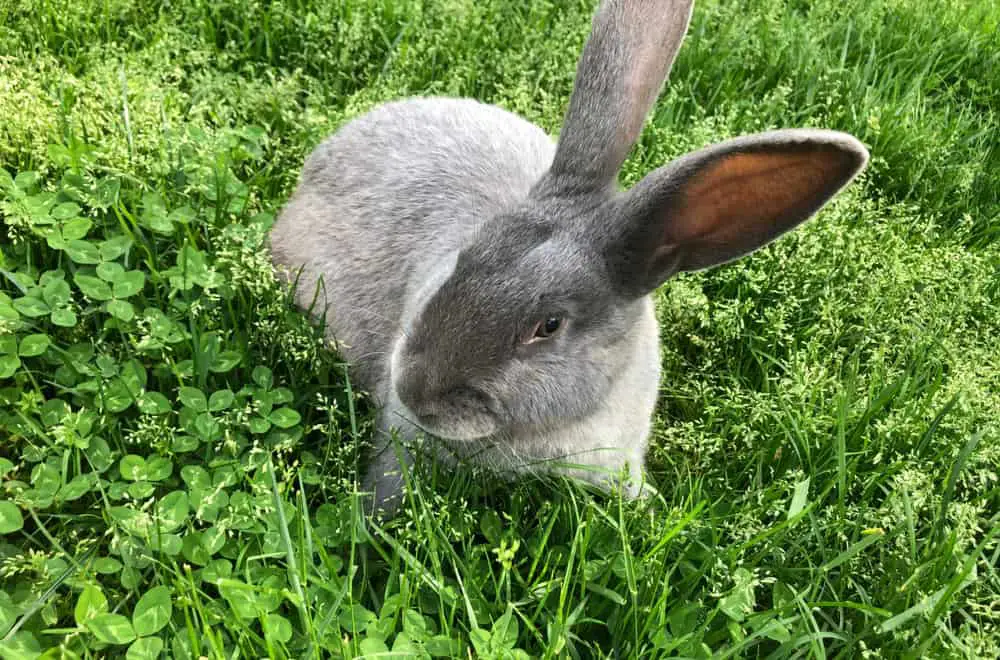
This multiple-purpose, 11 to 12 pounds (5 – 5.5 kg) heavy fancy breed is an excellent option for fur and meat production. Plus, these rabbits’ temperament makes them excellent pets. Nowadays, finding these bunnies is challenging, so selling their offspring is also highly profitable.
5. Altex rabbit
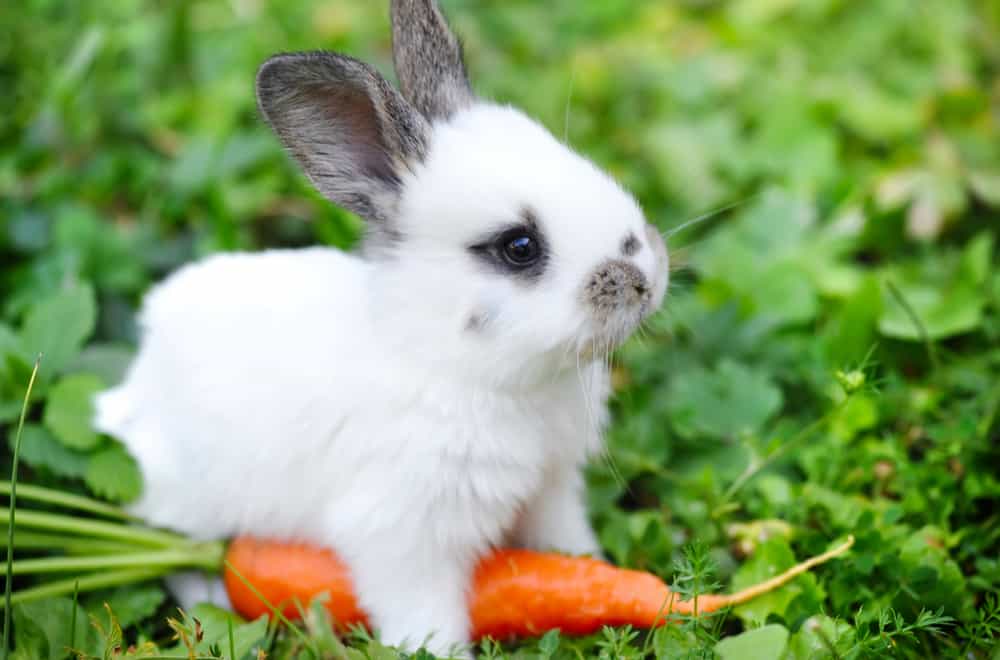
This breed is famous for both delicious meat and high-quality fur. These bunnies quickly put on weight, and adults effortlessly reach 10 to 20 pounds (4.5 – 9 kg) in no time. Plus, their meat-to-bone ratio is high. Since they are loveable and fluffy, many people keep them as pets.
For fur
Most rabbits have beautiful fur that people adore. However, you can differentiate a few coat types, making these animals attractive for various purposes.
Rabbits with normal fur
- Blanc De Hotot rabbit
- Dwarf Hotot rabbit
- American Sable rabbit
- Californian rabbit
- Florida White rabbit
- Lilac rabbit
- Beveren rabbit
- Argente Brun rabbit
- Britannia Petite rabbit
- Champagne D’Argent rabbit
- Crème D’Argent rabbit
- Checkered Giant rabbit
- American, Standard, and Giant Chinchilla rabbit
- Cinnamon rabbit
- Silver and Silver Fox rabbit
- Dutch rabbit
- Netherland Dwarf rabbit
- Belgian Hare rabbit
- English Spot rabbit
- Himalayan rabbit
- Harlequin rabbit
- Havana rabbit
- Thrianta rabbit
- Flemish Giant rabbit
- Holland, French, English, and Mini Lop rabbit
- New Zealand rabbit
- Polish rabbit
- Palomino rabbit
- Rhinelander rabbit
- Silver Martin rabbit
Rabbits with the rex fur
- Rex rabbit
- Mini Rex rabbit
Rabbits with the satin fur
- Satin rabbit
- Mini Satin rabbit
- Satin Angora rabbit
Rabbits with wool
- American Fuzzy Lop rabbit
- Jersey Wooly rabbit
- English, French, and Giant Angora rabbit
- Lionhead rabbit
1. Jersey Wooly rabbit
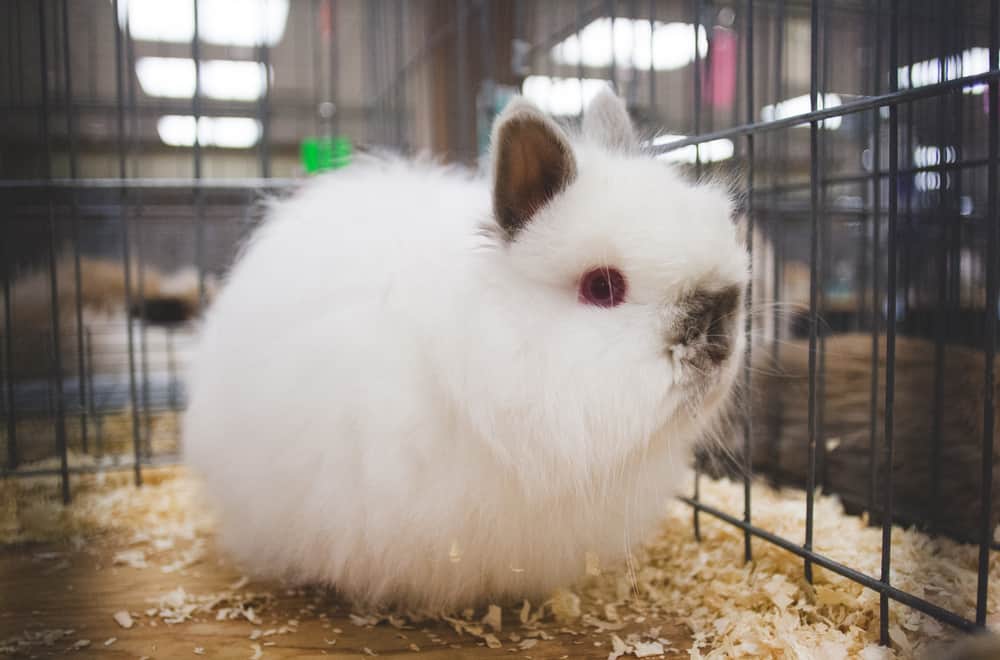
Even though Jersey Wooly rabbits’ fur is beautiful, it is economically unprofitable to breed them for this purpose because of their small size. However, these dwarf bunnies weighing only 1 to 3 pounds (0.4 – 1.4 kg) are excellent pets, so breeding them with this idea in your mind is primary nowadays.
2. American Fuzzy Lop rabbit
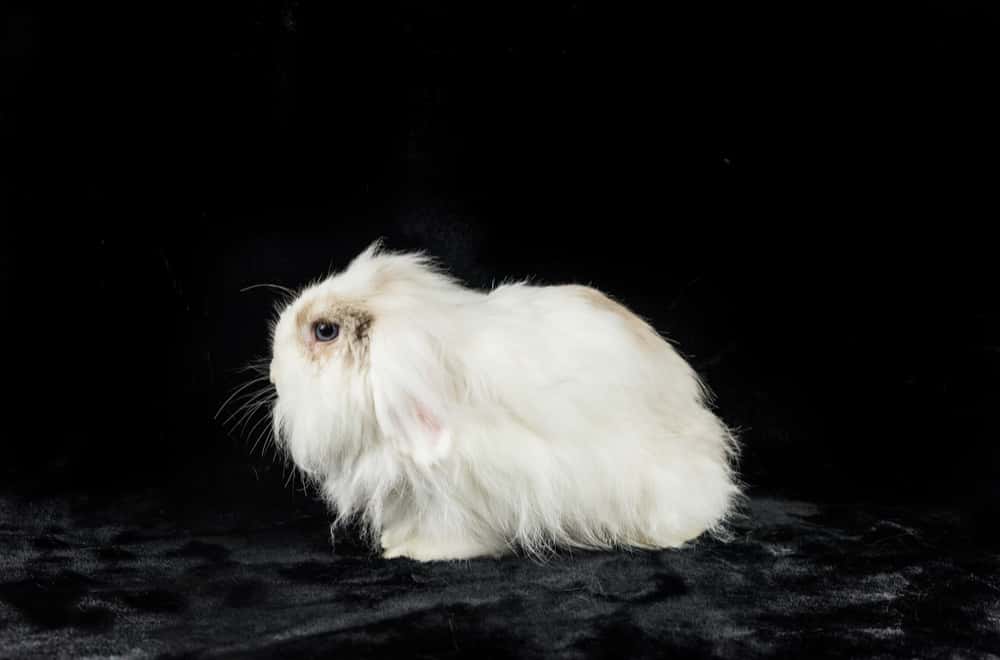
American Fuzzy Lop weighing approximately 3 to 4 pounds (1.4 – 1.8 kg) has a beautiful woolly coat. It is shorter than a commercial Angora fur and similar to the Holland Lop. It is pretty coarse and thick, but many appreciate its elegant look.
3. English Angora rabbit
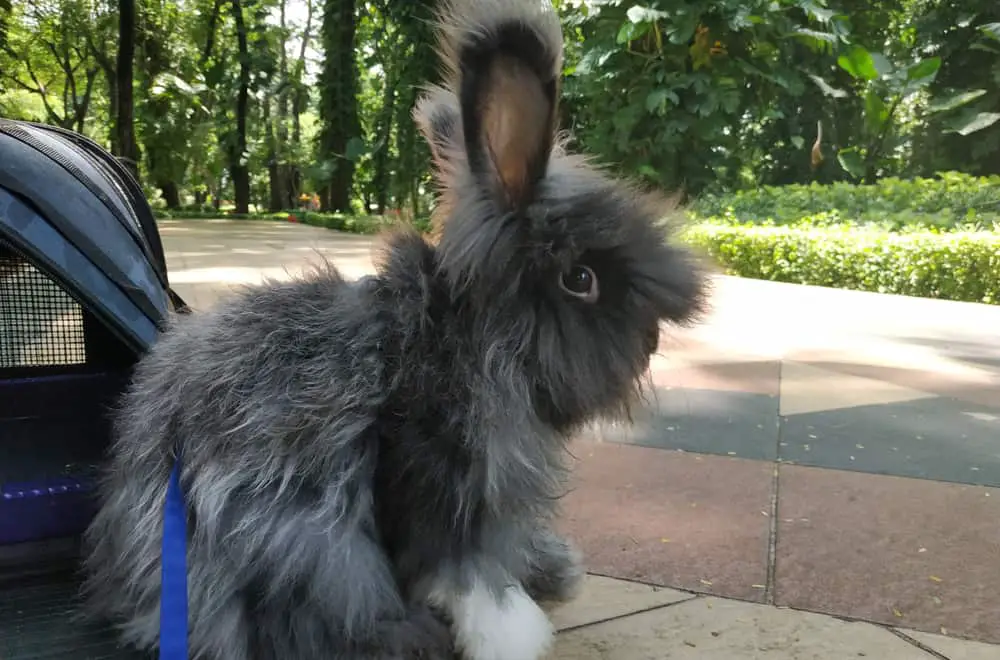
With 5 to 7.5 pounds (2.3 – 3.4 kg), English Angora is the tiniest in the Angora breed group. Despite their size, these rabbits are highly productive because producing fur on every body part. You can get 1 pound (0.45 kg) of angora fiber per year from these relatively small creatures. It is pretty impressive, right?
4. Satin Angora rabbit
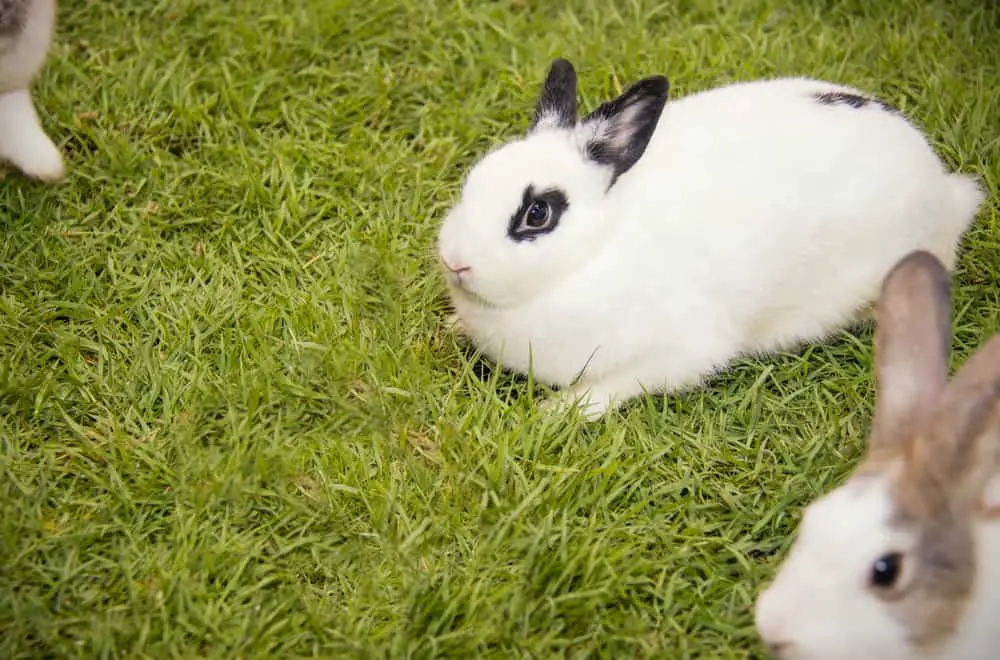
These beautiful, 3.5 to 9.5 pounds (1.6 – 4.3 kg) heavy rabbits are among the most sought-after breeds for fur producers. Their advantage is easy-to-spin wool of gorgeous color. One rabbit can produce only 8 ounces (227 g) of fiber a year, making its fur luxurious and expensive.
5. French Angora rabbit
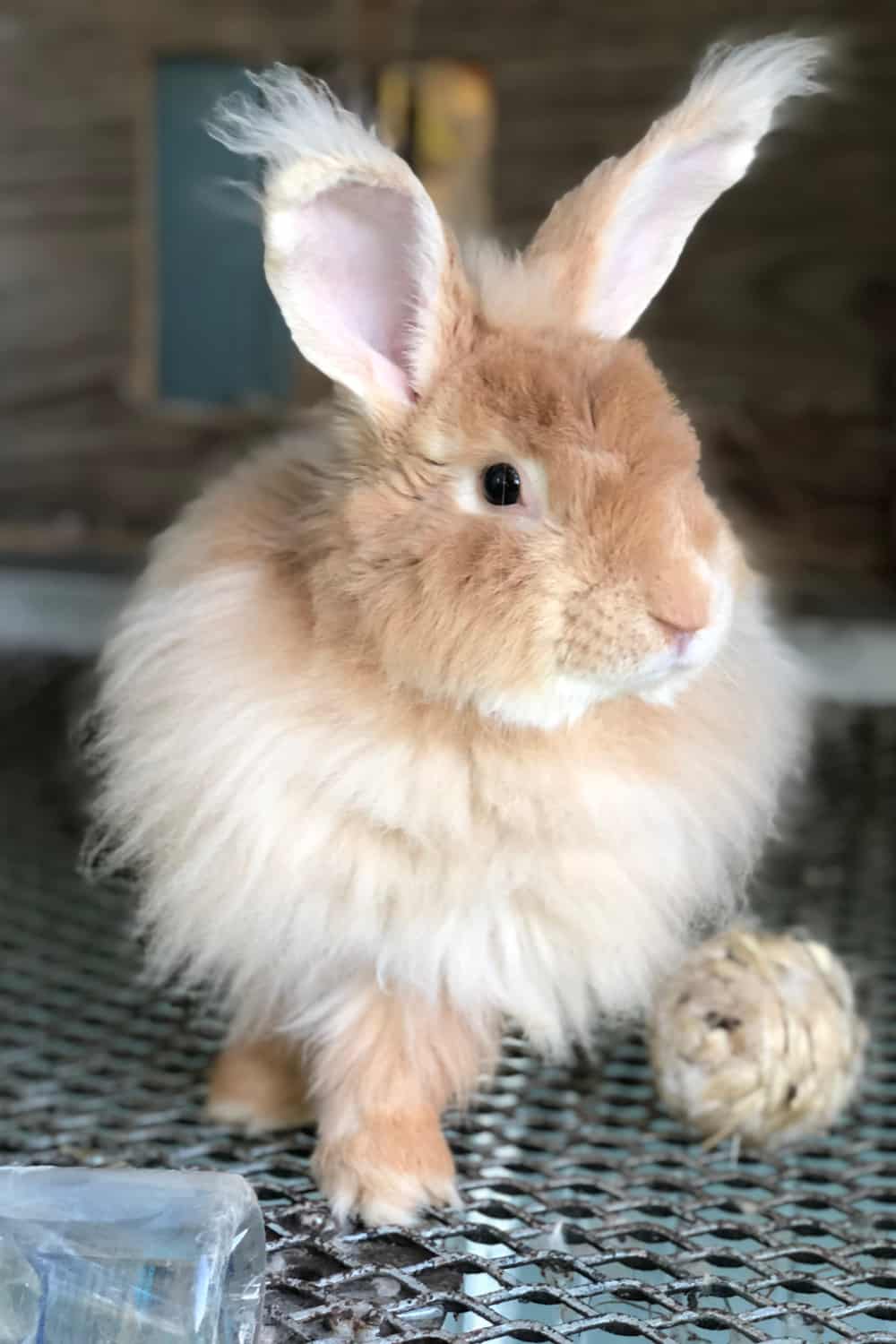
French Angora is 7.5 to 10 pounds (3.4 – 4.5 kg) heavy, making it more sizable than the English type. Plus, it has shorter hair and is less demanding when it comes to maintenance. On the other hand, you can expect lower wool production, with no more than 1 pound (0.45 kg) of fiber a year.
6. German Angora rabbit
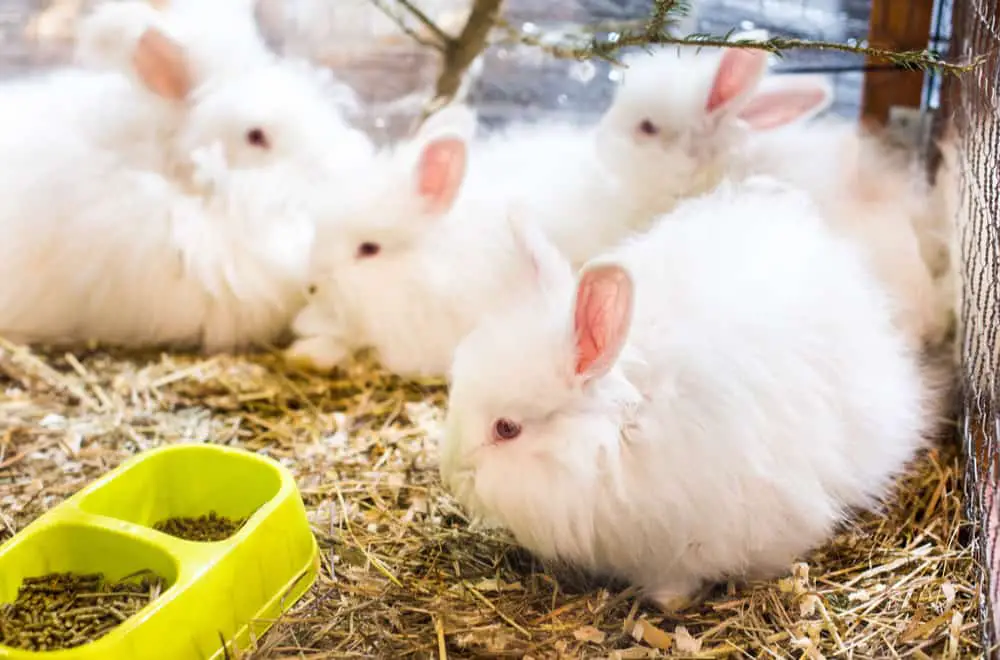
Approximately 5 to 12 pounds (2.3 – 5.5 kg) heavy German Angora is often almost twice as large as the English type. The best thing is that this breed produces more wool, or about 2 pounds (0.9 kg) a year. You can clip these rabbits every 90 days, on average.
7. Giant Angora rabbit
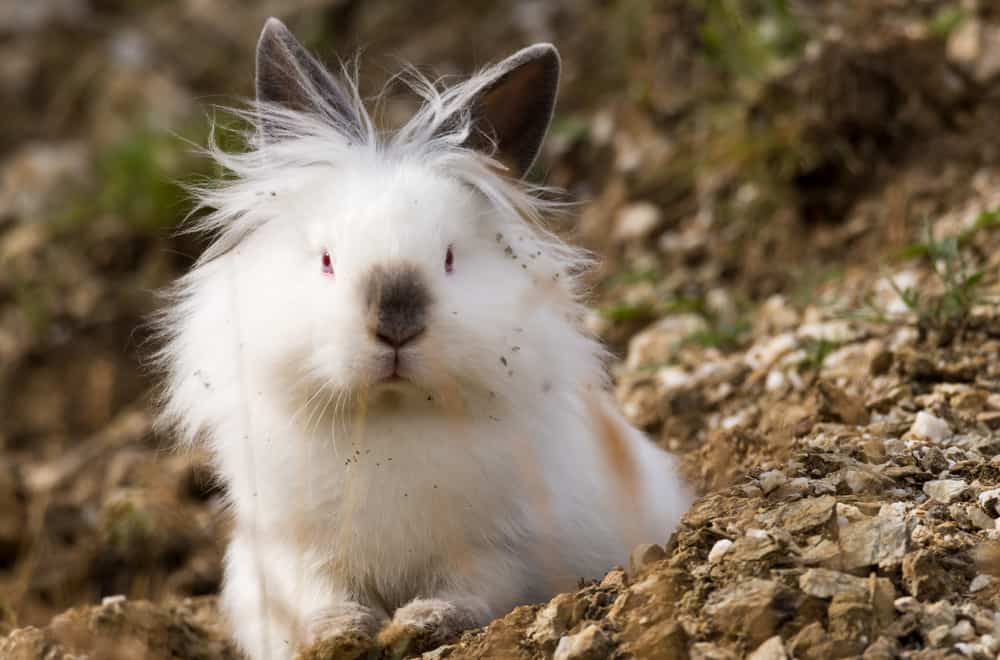
This sizable Angora type weighs about 9.5 to 10 pounds (4.3 – 4.5 kg) and produces 1 to 4 pounds (0.45 – 1.8 kg) of wool annually. You need to clip these rabbits regularly since brushing is not an option. Their white fur is pretty similar to the German type’s coat.
8. Standard Rex rabbit
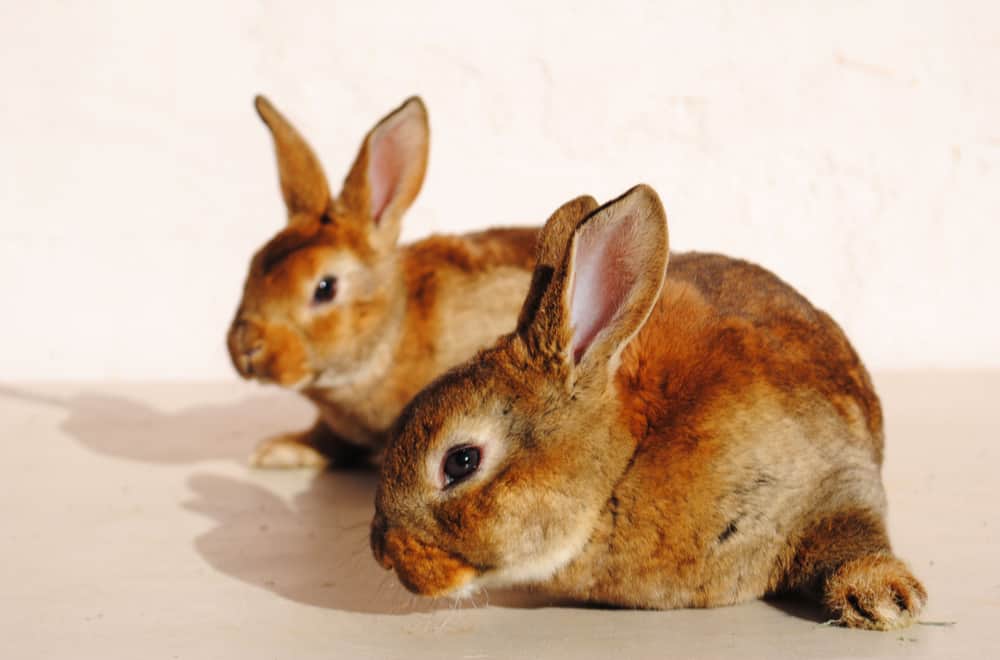
Standard Rex rabbits are 7 to 10 pounds (3.2 – 4.5 kg) heavy, on average. Even though some farmers still breed them for meat, their primary purpose is for fur production. Besides commercial use, their velvety textured coat and docile temperament make these bunnies excellent pets.
For lab
Besides guinea pigs, rabbits are lab animals that scientists use most often for research. For instance, 205,482 bunnies were a part of lab testing in 2012, and over a third were used in procedures that involved distress and pain.
To make things worse, their use is for commercial, not scientific reasons. These toxicity testing for household and cosmetic products are cruel and painful, particularly unreliable Draize eye and skin irritancy tests.
Scientists also use these animals for testing medical products for:
- Pyrogenicity
- Embryotoxicity
- Biomedical research
- Polyclonal antibody production
Luckily, the number of rabbits used for this purpose has drastically decreased in recent years. Besides New Zealand rabbits, the most often chosen breed for experiments, a few other rabbit types are particularly convenient for this purpose.
1. Dutch rabbit
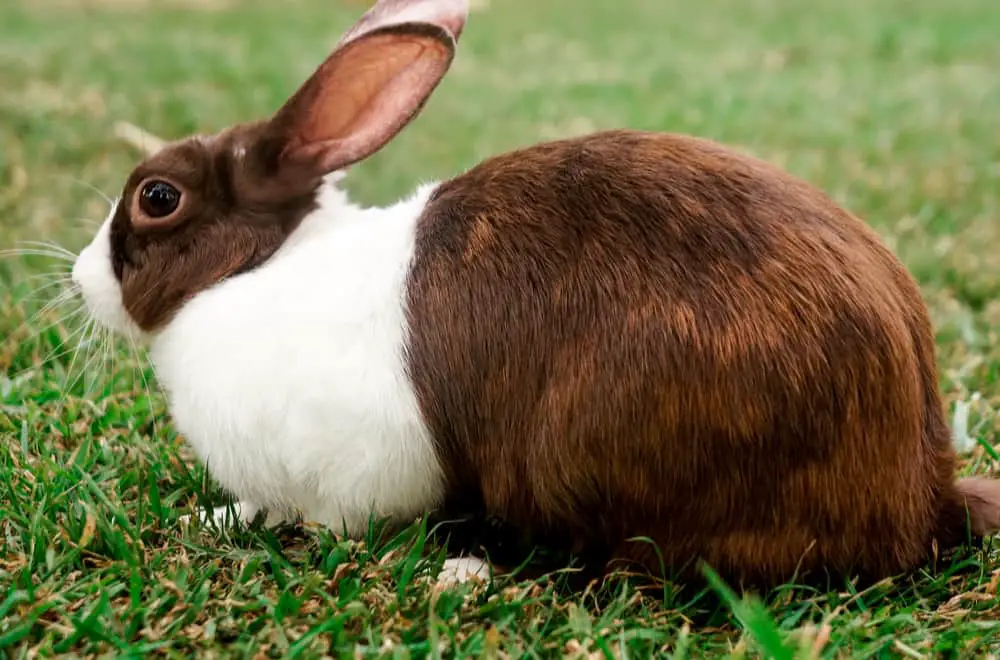
A rounded and balanced Dutch rabbit weighing 3.5 to 5.5 pounds (1.6 – 2.5 kg) can be a lovely pet and attractive show animal. Unfortunately, some end up in labs for research purposes and spend their lives in suffering and misery. They are small, easy-to-handle, highly reproductive, and economical, making this breed ideal for this horrible use.
2. Himalayan rabbit
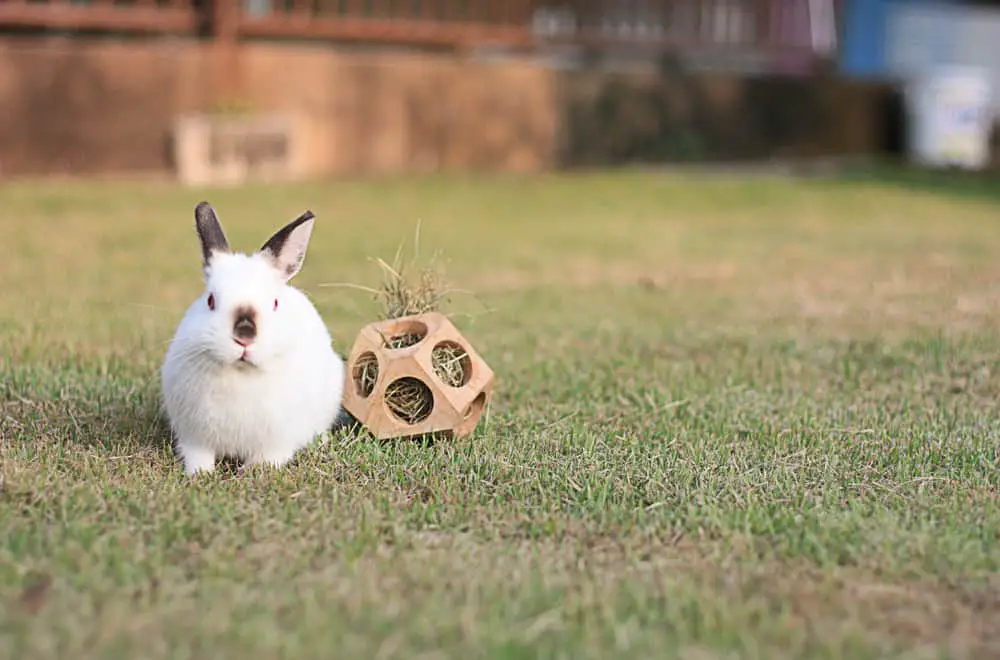
This old and unique rabbit breed is well-known worldwide, and people often use these lovely creatures as pets. Unfortunately, one number ends up in labs because of experimental reasons. Their advantage for such a purpose is the pure breed bloodline.
Summary
Rabbits are profitable animals, but you should calculate all expenses before starting to breed them. The crucial thing is to pick out the desired breed and keep your bunnies healthy, clean, and satisfied. Remember that the perfect breed to choose and the final profit significantly depend on the rabbits’ purpose.
